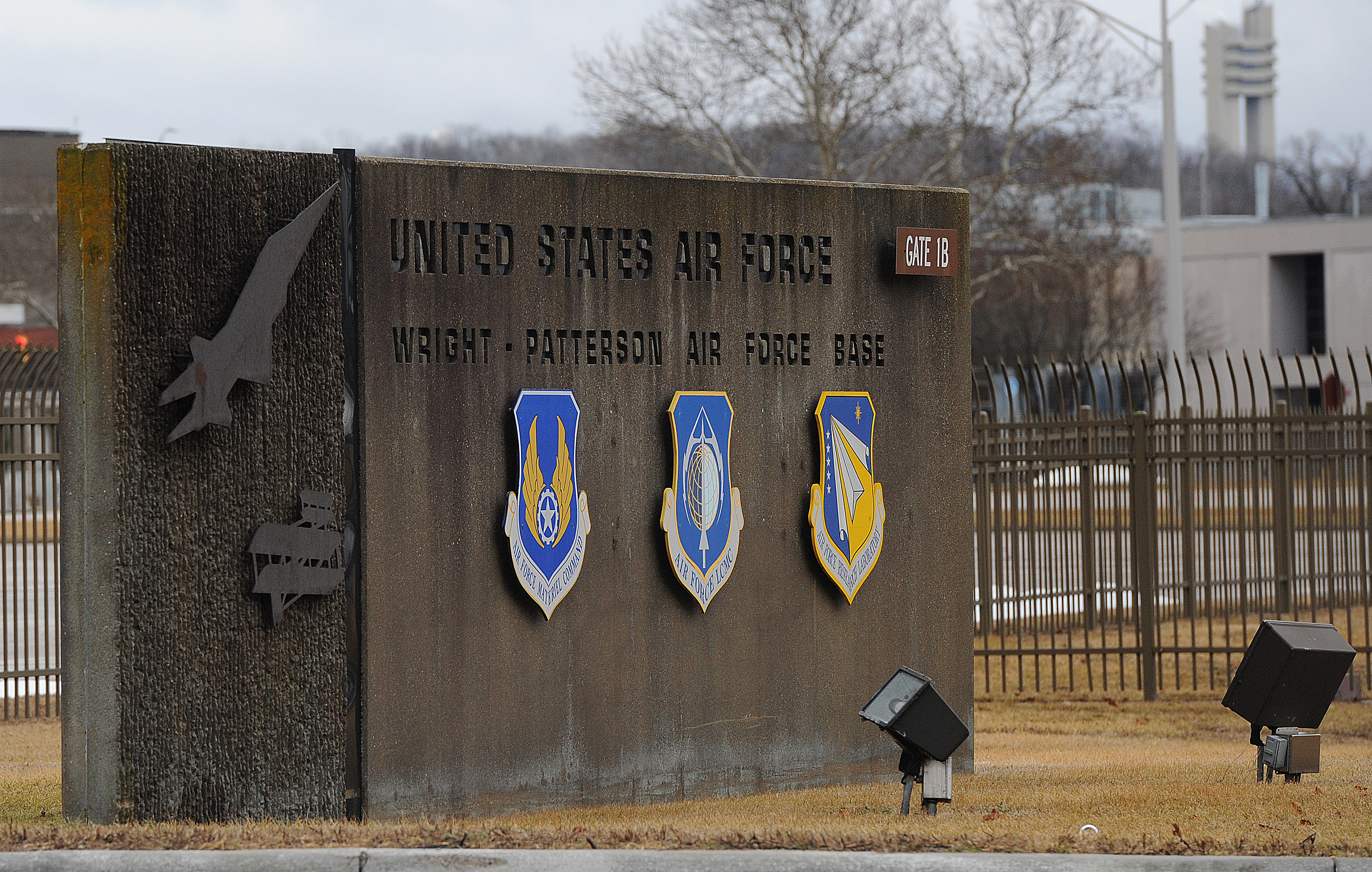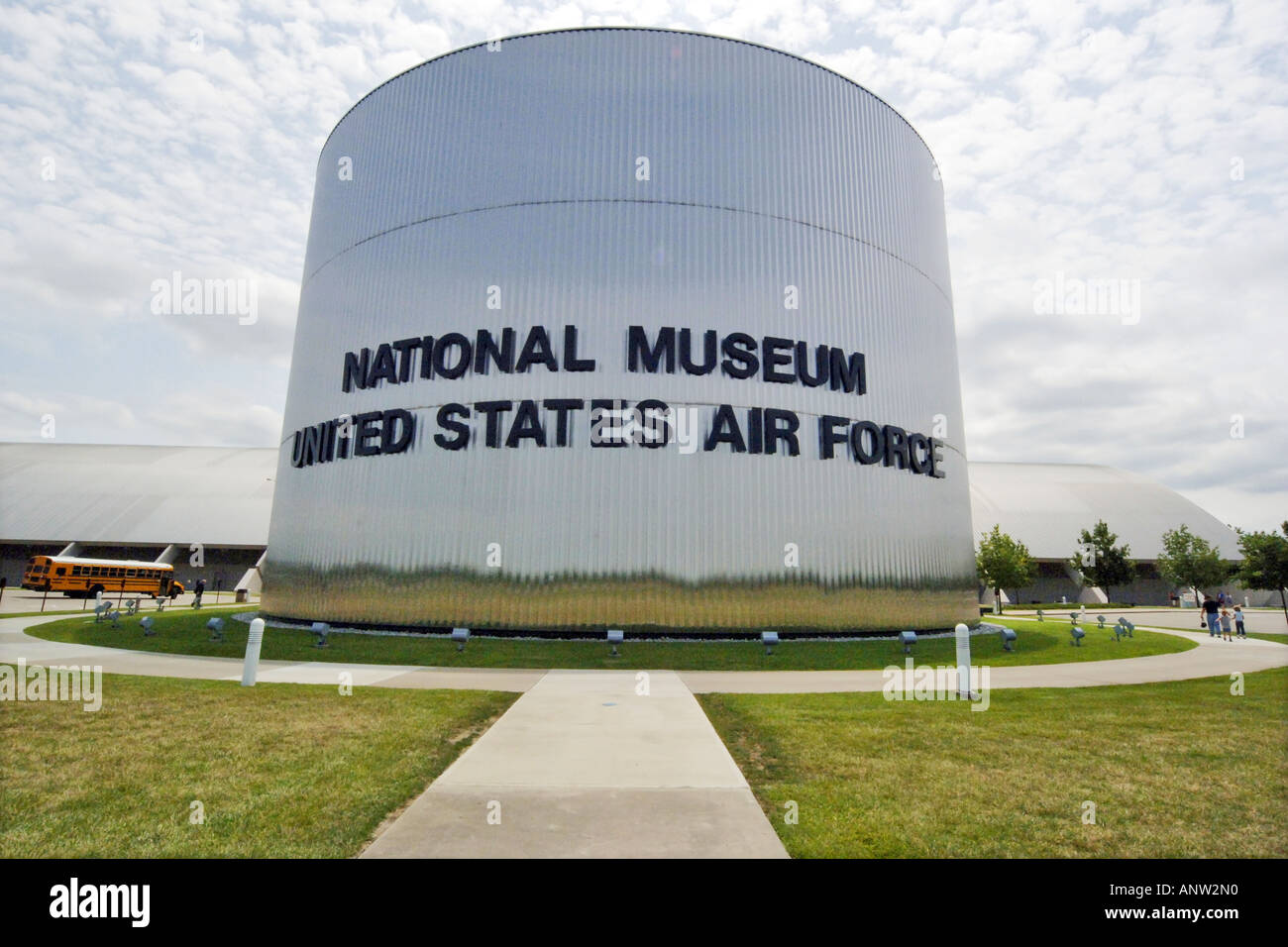Wright-patterson Afb Address City - 39 ° 49'23 "N 084 ° 02'58" W / 39.82306 ° N 84.04944 ° W / 39.82306; -84.04944 ( Wright-Patterson Air Force Base ) Coordinates: 39 ° 49'23 "N 084 ° 02'58" W / 39.82306 ° N 84.04944 ° W / 39.82306; -84.04944 (Wright-Patterson Air Force Base)
Wright-Patterson Air Force Base (WPAFB) (IATA: FFO, ICAO: KFFO, FAA LID: FFO) is a United States Air Force base and csus-located location in Dayton, Ohio, east of Gree and Montgomery counties. It includes Wright and Patterson Fields, which were originally Wilbur Wright Field and Fairfield Aviation General Supply Depot. Patterson Field is located 10 miles (16 kilometers) northeast of Dayton; Wright Field is located approximately 5 miles (8.0 kilometers) northeast of Dayton.
Wright-patterson Afb Address City

The host unit at Wright-Patterson AFB is the 88th Air Force Base Wing (88ABW), assigned to the Air Force Life Cycle Management Center and Air Force Materiel Command. 88 ABW operates the airspace, maintains all infrastructure, and provides security, communications, medical, legal, personnel, procurement, financial, transportation, air traffic control, weather forecasting, public affairs, recreation, and chaplaincy services to the associated 60 to more than one unit. .
Timeline: Dayton's History With The Air Force And Wright Patterson Air Force Base
The origins of the base begin with the establishment of Wilbur Wright Field on May 22 and McCook Field on November 1917, both established by the US Air Force Aviation Section. The Signal Corps as a World War II installation. McCook was used as a proving ground and for aviation experiments. Wright was used as a flying field (established Patterson Field in 1931); Fairfield Aviation General Supply Depot; armory school and temporary storage depot. McCook's duties were transferred to Wright Field, which was closed in October 1927.
In 1995, negotiations were held on the basis of the war in Bosnia, resulting in the Dayton Agreement, which ended the war.
The core portion of Gree County is a csus designated place (CDS), with a population of 1,821 as of 2010 csus.
Wright-Patterson's Ada culture prehistoric Indian mounds are located on P Street and, at the Wright Brothers Memorial, a group of hilltop mounds.
Wright Patterson Changes Base Entry Requirements > Wright Patterson Afb > Article Display
Aircraft ground operations at what is now Wright-Patterson Air Force Base began in 1904-1905, when Wilbur and Orville Wright used 84 acres (340,000 m).
For experimental test flights with the Wright Flyer III. His airshow company and the Wright Company Aviation School returned to use the airport between 1910 and 1916.
) (including Huffman Prairie Flying Field) attached 40 acres (160,000 m) along the Mad River leased to the military by the Miami Conservation District.

) purchased by the Army from the Fairfield Aviation General Supply Depot District and 254 acres (1.03 km).
Wright Patterson Afb Medical Center
) complex for McCook Field, north of downtown Dayton, between Keowee Street and the Great Miami River. In 1918, Wilbur Wright Field agreed to allow McCook Field to use hangar and shop space, as well as enlisted mechanics, to assemble and maintain aircraft and engines under the direction of Air Service Chief Mason Patrick.
After World War I, 347 German aircraft were brought to the United States; some entered the Army Aeronautical Museum.
It was discontinued at Wilbur Wright Field. Wilbur Wright Field and the depot were merged after World War I to form Fairfield Air Depot. Patterson Family Dayton Air Services Committee, Inc. created it, and in two days ran a campaign that raised $425,000 and bought 4,520.47 acres (18.2937 km).
In 1924, the Commission presented President Calvin Coolidge with the deed to build a new aeronautical engineering center. Tire area (including Fairfield Air Depot) designated as Wright Field,
The Best Neighborhoods In Wright Patterson Afb, Oh By Home Value
New facilities were constructed between 1925 and 1927 to accommodate all McCook Field functions being relocated to the portion of Wright Field west of Huffman Dam.
"The (unofficial) world altitude record of 28,899 feet was set by Major R. W. Schroeder (Bristol-300 Hispano) at Dayton, Ohio".
Major R. W. Schroeder and Lt. By G. E. Elfrey Dayton "2 men set official world altitude record 31,821 feet." In a Leper plane, with a supercharged Liberty 400 engine.

"A parachute jump of 24,206 feet was made by Capt. A. W. Stevs from a Martin bomber piloted by Lt. L. Wade, at Dayton, Ohio."
Base Lodge Named Best In Air Force > Wright Patterson Afb > Article Display
"Lieutenants J. A. Macready and OG Kelly (Fokker T2-Liberty 375) at Dayton, Ohio, time 36:04:34. Distance: 2,516.55 miles."
"Inaugural Flight of Barling Bomber (6 Liberty 400 Engines), Largest US-Made Aircraft, at [Wilbur] Wright Field, Dayton, Ohio. Pilot, Lt. H. R. Harris."
"Air race winners at [Wilbur] Wright Field, Dayton, Ohio, are: Liberty gine Builders Trophy, Lt. D. G. Duke (DH4B-Liberty 400), speed 130.34 mph over 180 miles; John L Mitchell Trophy, Lt. C Bettis (Curtiss). PW8—D12HC Curtiss 460), speed 175.41 mph over 200 km, Pulitzer Trophy race, Lt. H.H. Mills (Verville Sperry—D12AHC Curtiss 520), speed 216.55 mph over 200 km- on the route".
"Wright Field, Dayton, Ohio, formally dedicated, and Materiel Division moves from McCook Field to new site. John L. Mitchell Trophy race won by Lt. I. A. Woodring, 1st Pursuit Group, during ceremonies. Speed: 158.968 mph ."
Wright Patterson, Springfield Air Base Part Of $40b Overall Economic Impact On Ohio
Wright's field tests of "superchargers designed to deliver pressure at sea level to 30,000 feet." and liquid oxygen breathing system.
Wright Field was "formally dedicated" on October 12, 1927 "when the Materiel Division moved from McCook Field to the new site"
At the time of the dedication, approximately $5 million had been spent on the new facility after 18 months of work, and the total was expected to rise to between $7 and $8 million.

Events included the John L. Mitchell Trophy Race (won by Lt. I. A. Woodring of the 1st Pursuit Party—Speed: 158.968 mph)
Experience The National Museum Of The U.s. Air Force
On July 1, 1931, the portion of Wright Field east of Huffman Dam (land now known as Wright-Patterson Air Force Base Areas A and C, including Fairfield Air Depot and Huffman Prairie Flying Field) was honorably renamed "Patterson Field". of Lt. Frank Stuart Patterson. Lt. Patterson was the son of Frank J. Patterson, co-founder of the National Cash Register.
Shortly before the end of the First World War, Patterson lt. and Observer LeRoy Swan, of the 137th Aero Squadron, died at Wright Field in the crash of their de Havilland DH.4 after their wings collapsed in a dive. ground targets with a new propeller-synchronized machine gun.
Employment at the nearby World War II Army Air Fields increased from about 3,700 in December 1939 to over 50,000 during the war.
) facility with approximately 300 buildings and the Air Corps' first modern paved runways. The original portion of the site was filled with office buildings and laboratory and testing facilities. The Hilltop area was acquired from private owners in 1943-1944 to provide housing and services for the troops.
Nasic Campus Expansion To Cause Road Closures
The portion of Patterson Field from Huffman Dam to Brick Quarters (including the command headquarters in Building 10262) was administratively assigned the southern portion of Patterson Field along Route 4 from Patterson Field to Wright Field. To avoid confusion between the two areas of Wright Field, the southern part of the first section of Patterson Field was designated "Area A", the original Wright Field became "Area B", and the northern part of Patterson Field, including the field flight, was designated "Area C".
At Wright Field in February 1940, the Army Air Corps established the Technical Data Branch (Technical Data Section in July 1941, Technical Data Laboratory in 1942). After the establishment of the Air Corps Ferrying Command on 29 May 1941, a command installation point was opened at Patterson Field on 21 June.
The Air Technical Command flight test training unit was established at Wright Field on 9 September 1944 (moved to Patterson Field in 1946, Edwards AFB on 4 February 1951).

Two residential and service areas on Highway 444, Wood City and Skyway Park, were geographically separated from downtown Patterson Field and developed a nearly self-sufficient community status. (Wood City was acquired from the government in 1924 as part of the original land grant, but was used primarily as a district until World War II. Skyway Park was acquired in 1943.) they were trained in both fields, as well as thousands of civilian workers, mainly single women hired to work in the warehouse. Skyway Park was demolished after the war. Wood City was finally transformed
Wright Patterson Afb Adjusts Base Entry Requirements
Field Collection Training was assigned to Wright Field for training in the technical aspects of "collision" intelligence (RAF Squadron Leader Colley identified how to obtain information from equipment marking plates and squadron markings.
The first German and Japanese aircraft arrived in 1943, and captured crews soon filled six buildings, a large outdoor storage area, and part of a flight-line hangar for analysis at the Technical Data Laboratory (TDL closed its Aeronautical Museum from the military). World War II's Operation Lusty brought 86 German aircraft back to Wright Field for study, such as the Messerschmitt 262 jetliner, while postwar Operation Paperclip brought German scientists and technicians to Wright Field, such as Ernst R. G. Eckert, to work in various Wright Field laboratories. .)
Project Sign (Project Grudge in 1949, Project Blue Book in March 1952) was the WPAFB's T-2 Intelligce investigations into reports of unidentified flying objects (UFOs) that began in July 1947.
In 1951, the Air Technical Intelligence Cter (ATIC) began to be studied
Wright Patterson Air Force Base Mound
Jobs wright patterson afb, wright patterson afb hotels, wright patterson afb services, usaf wright patterson afb, wright patterson afb lodging, wright patterson afb housing, wright patterson afb oh, wright patterson afb map, wright patterson afb directory, wright patterson afb weather, wright patterson afb, wright patterson afb homes
0 Comments